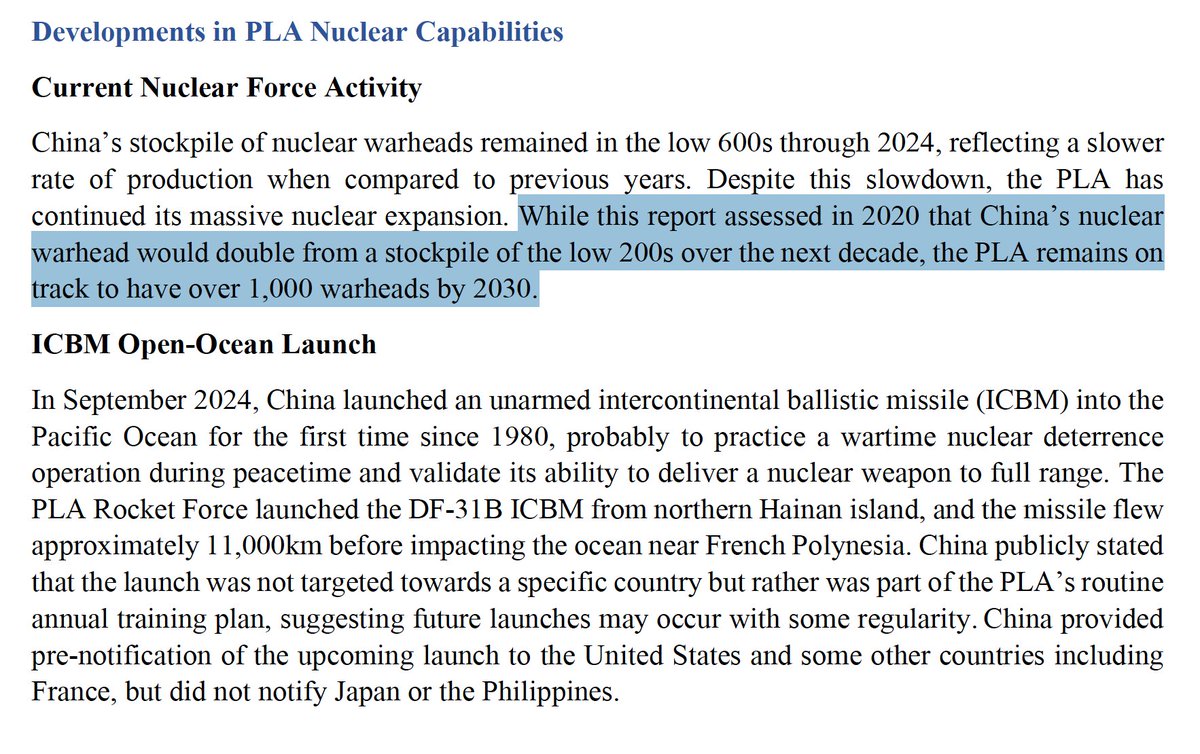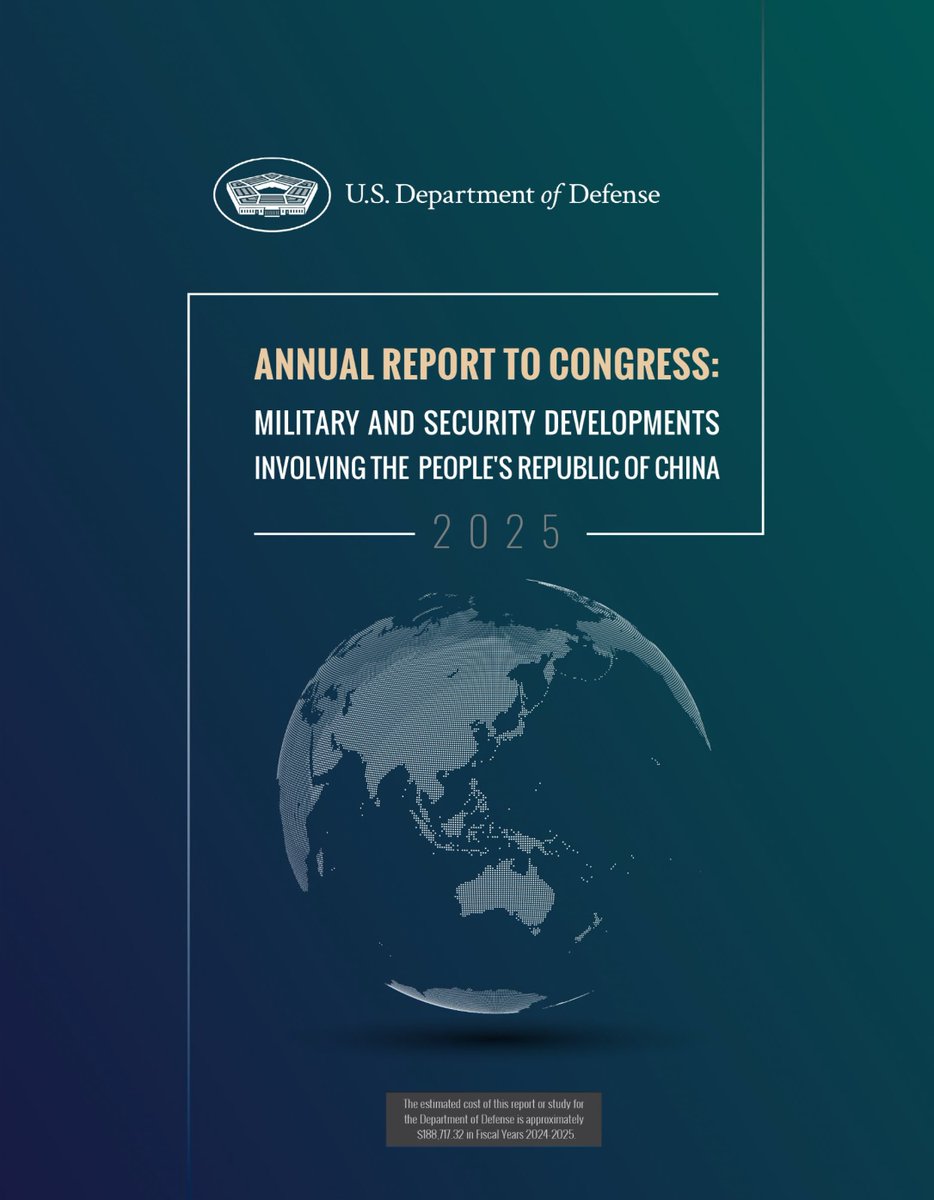Ok, here we go: some thoughts on the 2024 DoD China Military Power report, or CMPR, which was released yesterday (finally!).
I'll focus on updates I thought were interesting/consequential - areas new or different from last year's report.
(part 1)
I'll focus on updates I thought were interesting/consequential - areas new or different from last year's report.
(part 1)

In general, I'd say the report has few surprises this year (but one significant one, detailed in the next installment).
The PLA continues on its trajectory of significant improvements in reach and capability, with no signs of slowing down.
The PLA continues on its trajectory of significant improvements in reach and capability, with no signs of slowing down.
For comparisons between the 2024 and 2023 reports, this year's report will be on the left, last year's on the right.
First up: total numbers. The PLA remains the largest active-duty military in the world, though some numbers dropped a bit due to a change in counting methods.

First up: total numbers. The PLA remains the largest active-duty military in the world, though some numbers dropped a bit due to a change in counting methods.


On to the details: first up, the PLA Army. In 2023, it transferred 3 brigades to the PLAN Marine Corps, improving the PLANMC's power projection capability. 

The PLA Navy's total warship numbers remain unchanged from last year, but has up to 10 Type 052D destroyers under construction. It's also building both Type 054A and 054B frigates, as well as two types of LHAs (the 075 and 076). 

Meanwhile: news.usni.org/2024/04/02/con…
The report highlights the PRC's double standard on military operations in EEZs - how the PRC interferes with operation in its EEZ, but feels free to operate in other nations'. 

Sound familiar?
https://x.com/tshugart3/status/1811411589473403083
Same as last year, the report predicts a PLAN battle force of 395 ships in 2025 (a 25-ship jump in 1 year?) and 430 in 2030.
Here's how that hull count compares to the numbers predicted in the FY25 USN shipbuilding plan:
Here's how that hull count compares to the numbers predicted in the FY25 USN shipbuilding plan:

This year's report has more details on the under-construction Type 076 LHA, confirming hybrid electric propulsion and electric catapults for operating large UAVs for strike and ISR missions. 

In this year's report, each service gets a paragraph discussing its readiness. The PLAN's discusses improvements in both surface and submarine force training systems and processes. 

For the first time, we get some details on the PLA forces stationed at its base in Djibouti: a battalion of about 400 marines. 

In the section on PLANMC readiness, the report discussed civil-military integration training, practicing with civilian RO/ROs for both amphibious and non-amphibious operations. 

On that topic, would you like to know more? warontherocks.com/2022/10/mind-t…
Moving on to the PLAAF, the report discussed the transfer of much of the land-based PLAN aviation force to the PLAAF, allowing the PLAN to focus more on carrier aviation and enabling better air defense coordination. 

One change from last year: the report says the PLAAF's tech is rapidly catching up to US standards, where last year's said the PLAAF is catching up to "western air forces". Not sure why the difference, or how much it means - but it was changed. 



One detail added to this year's report: the PLAAF's J-16 "4+ gen" fighter inventory: apparently they had 225 in 2023, with more on the way. I'd be interested to know how this compares with other folks' open source estimates. 

Similar to the PLAN, the PLAAF appears to be making improvements to its training and exercises, improving its potential real-world combat effectiveness. 

In the next installment, we'll start with the PLA Rocket Force.
In the meantime, here's a link to the report itself: media.defense.gov/2024/Dec/18/20…
In the meantime, here's a link to the report itself: media.defense.gov/2024/Dec/18/20…
See here for part 2:
https://x.com/tshugart3/status/1869762533218975867
• • •
Missing some Tweet in this thread? You can try to
force a refresh




















